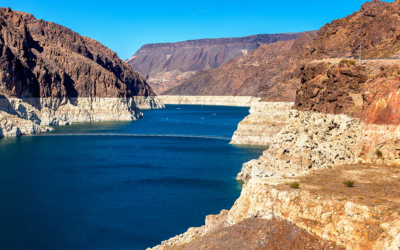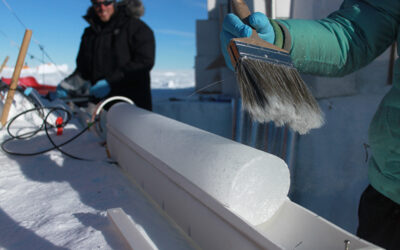The National Science Foundation (NSF) today announced a multi-institutional consortium – which includes UNLV and DRI – to confront the climate challenges facing the desert Southwest and spur economic development in the region.
A New, Rigorous Assessment of OpenET Accuracy for Supporting Satellite-Based Water Management
A new study offers a comprehensive multi-model, large-scale accuracy assessment of an operational satellite-based data system to compute evapotranspiration. The researchers found that OpenET data has high accuracy for assessing evapotranspiration in agricultural settings, particularly for annual crops like wheat, corn, soy, and rice.
The First Assessment of Toxic Heavy Metal Pollution in the Southern Hemisphere Over the Last 2,000 Years
An international team of scientists led by DRI found evidence of Southern Hemisphere heavy metal pollution preserved in Antarctic ice cores from early Andean cultures and Spanish Colonial mining that predates the Industrial Revolution by centuries.
DRI-Developed Company TuBiomics Named A Top Ten Agri-Biotech Solutions Company of 2023
With support from the Nevada Governor’s Office of Economic Development, TuBiomics has emerged as a leader in developing plant and soil health products using sustainable, natural, chemistry-based solutions.
First Dive Survey of Lake Tahoe’s Lakebed Finds High Amounts of Plastic and Other Litter
Scientists teamed up with nonprofit Clean Up the Lake to collect and analyze litter found on the bottom of Lake Tahoe. In one of the first studies to utilize scuba divers to collect litter from a lakebed, 673 plastic items were counted from just a small fraction of the lake.
DRI’s Hans Moosmuller on Antarctic Expedition to Investigate the Impacts of Pollution Near the South Pole
Hans Moosmuller, Ph.D., joins two Chilean scientists from the Center for Environmental Technologies (CETAM) of the Universidad Tecnica Federico Santa Maria on an expedition to Antarctica’s Unión Glacier, located just a thousand kilometers from the South Pole.
Climate Change Will Increase Wildfire Risk and Lengthen Fire Seasons, Study Confirms
Scientists examined multiple fire danger indices for the contiguous U.S. to assess the impact of climate change on future wildfire risk and seasonality.
Community Scientists Needed: Help Improve Winter Weather Predictions
Community members across Utah, the Great Basin, and around Lake Erie and Lake Ontario are invited to join people across the country in contributing winter weather observations. The data is collected by scientists for a NASA-funded project that seeks to improve the accuracy of winter weather predictions.
3000 years of carbon monoxide records show positive impact of global intervention in the 1980s
An international team of scientists have assembled the first complete record of carbon monoxide concentrations in the southern hemisphere, based on measurements of air.
Volcanic Eruptions Triggered Historical Global Cooling
The new study, led by the School of Earth and Environmental Sciences at St Andrews with international colleagues from the Desert Research Institute and others in Switzerland and the USA, and published in The Proceedings of the National Academy of Sciences (PNAS) (6 November 2023), finds that massive volcanic eruptions caused historical global cooling.









